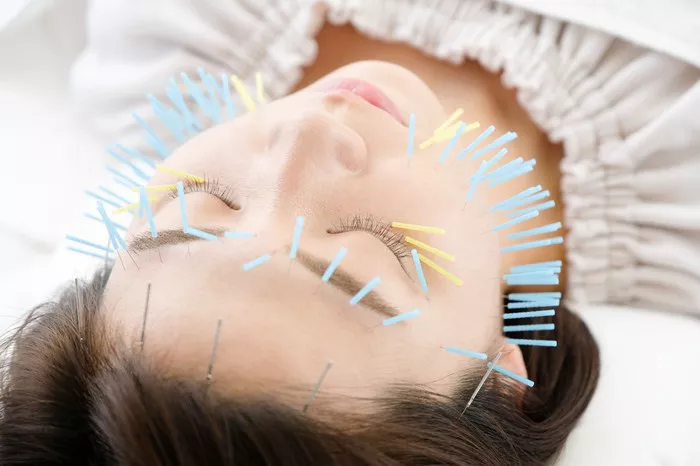Scars are a natural part of the body’s healing process, but their presence can be a source of concern for many individuals. Whether resulting from surgery, injury, or skin conditions, scars may impact both physical appearance and self-esteem. In the realm of dermatology and plastic surgery, scar revision is a common practice aimed at minimizing the visibility of scars. However, individuals often wonder about the permanence of scar revision and the factors influencing its effectiveness and durability.
What is Scar Revision?
Scar revision is a specialized area of cosmetic and reconstructive surgery focused on minimizing the appearance of scars. The primary goal is to improve the overall aesthetic of the skin by making scars less noticeable. This process involves various techniques that can alter the size, shape, and color of a scar, making it blend more seamlessly with the surrounding skin. Scar revision is not a one-size-fits-all solution; rather, it is tailored to the specific characteristics of each scar and the individual’s unique anatomy.
What are the Types of Scar Repair?
There are several types of scar repair techniques employed by dermatologists and plastic surgeons. The choice of method depends on factors such as the type of scar, its location, and the individual’s skin type. Common scar revision techniques include:
Topical Treatments: This involves the application of creams, ointments, or gels containing ingredients like silicone, corticosteroids, or vitamin E. These treatments aim to hydrate the skin, reduce inflammation, and promote collagen production.
Laser Therapy: Laser treatments use focused light beams to remove the outer layer of the skin and stimulate the production of new, healthier skin cells. This method is often effective for minimizing the appearance of certain types of scars, such as hypertrophic or keloid scars.
Surgical Excision: In cases where a scar is particularly large or raised, surgical excision may be recommended. This involves cutting out the scar tissue and then carefully suturing the wound to create a less noticeable scar.
Dermal Fillers: Injectable fillers, such as hyaluronic acid, can be used to raise depressed scars and make them more level with the surrounding skin. While this is a temporary solution, it can provide immediate improvement in the appearance of certain scars.
Microneedling: This technique involves the use of a device with fine needles to create micro-injuries in the skin. This process stimulates collagen production and can improve the texture and color of scars over time.
Factors Influencing Permanence
The permanence of scar revision is influenced by a combination of factors, ranging from individual healing processes to the chosen treatment method. Understanding these factors is crucial for both patients and healthcare professionals to manage expectations and optimize outcomes.
Individual Healing Response: Each person’s body responds differently to injury and subsequent healing. Factors such as genetics, age, and overall health can influence the body’s ability to regenerate tissue and determine how well a scar will fade over time.
Type of Scar: The type of scar being treated plays a significant role in the permanence of scar revision. Generally, superficial scars, such as those resulting from acne or minor injuries, may respond more favorably to treatment compared to deep scars or keloids.
Location of the Scar: Scars located in areas with a good blood supply tend to heal more effectively. For example, scars on the face often fade more discreetly than scars on areas with limited blood circulation.
Adherence to Aftercare: Patient compliance with post-treatment care instructions is crucial for optimal results. Proper wound care, sun protection, and avoidance of activities that may stress the healing skin contribute to the success of scar revision.
What the Effectiveness and Durability of Scar Repair Depends On
The effectiveness and durability of scar repair depend on various factors that extend beyond the initial treatment phase. From the skill of the healthcare provider to the patient’s commitment to post-treatment care, these elements collectively contribute to the long-term success of scar revision.
Skill and Experience of the Healthcare Provider: The expertise of the healthcare provider performing the scar revision procedure significantly influences its effectiveness. An experienced dermatologist or plastic surgeon can assess the unique characteristics of a scar and choose the most appropriate treatment method, maximizing the chances of a successful outcome.
Quality of the Initial Wound Closure: The way a wound is initially closed, whether through stitches, staples, or other methods, can impact the formation of scars. A well-executed closure minimizes tension on the wound, reducing the risk of hypertrophic or widened scars.
Patient’s Skin Type and Ethnicity: Different skin types and ethnicities may respond differently to scar revision treatments. Healthcare providers must consider the unique characteristics of each patient’s skin to tailor the approach and achieve the best possible results.
Follow-up Appointments and Adjustments: Regular follow-up appointments with the healthcare provider are essential for monitoring the progress of scar revision. In some cases, additional treatments or adjustments may be necessary to optimize the outcome.
Patient’s Overall Health and Lifestyle Choices: Factors such as smoking, poor nutrition, and certain medications can negatively impact the body’s ability to heal and may compromise the effectiveness of scar revision. Patients are encouraged to adopt a healthy lifestyle to support the healing process.
Conclusion
Scar revision is a valuable tool in the field of dermatology and plastic surgery, offering individuals the opportunity to enhance their appearance and boost self-confidence. The permanence of scar revision depends on a multitude of factors, including the type of scar, individual healing response, and the chosen treatment method. To achieve optimal results, collaboration between the healthcare provider and the patient is crucial, encompassing thorough assessment, personalized treatment plans, and diligent post-treatment care. By understanding the complexities of scar revision, individuals can make informed decisions about their care and embark on a journey towards minimizing the impact of scars on their lives.
[inline_related_posts title=”You Might Be Interested In” title_align=”left” style=”list” number=”6″ align=”none” ids=”3574,3572,3512″ by=”categories” orderby=”rand” order=”DESC” hide_thumb=”no” thumb_right=”no” views=”no” date=”yes” grid_columns=”2″ post_type=”” tax=””]
































